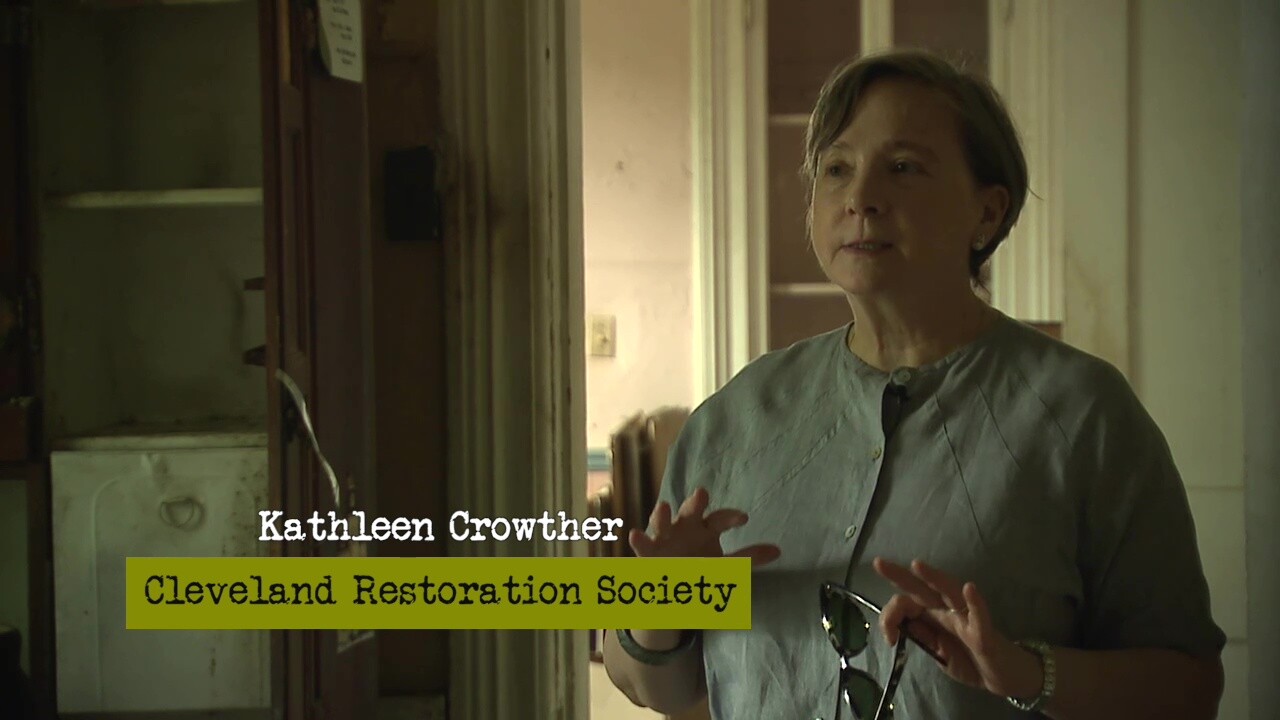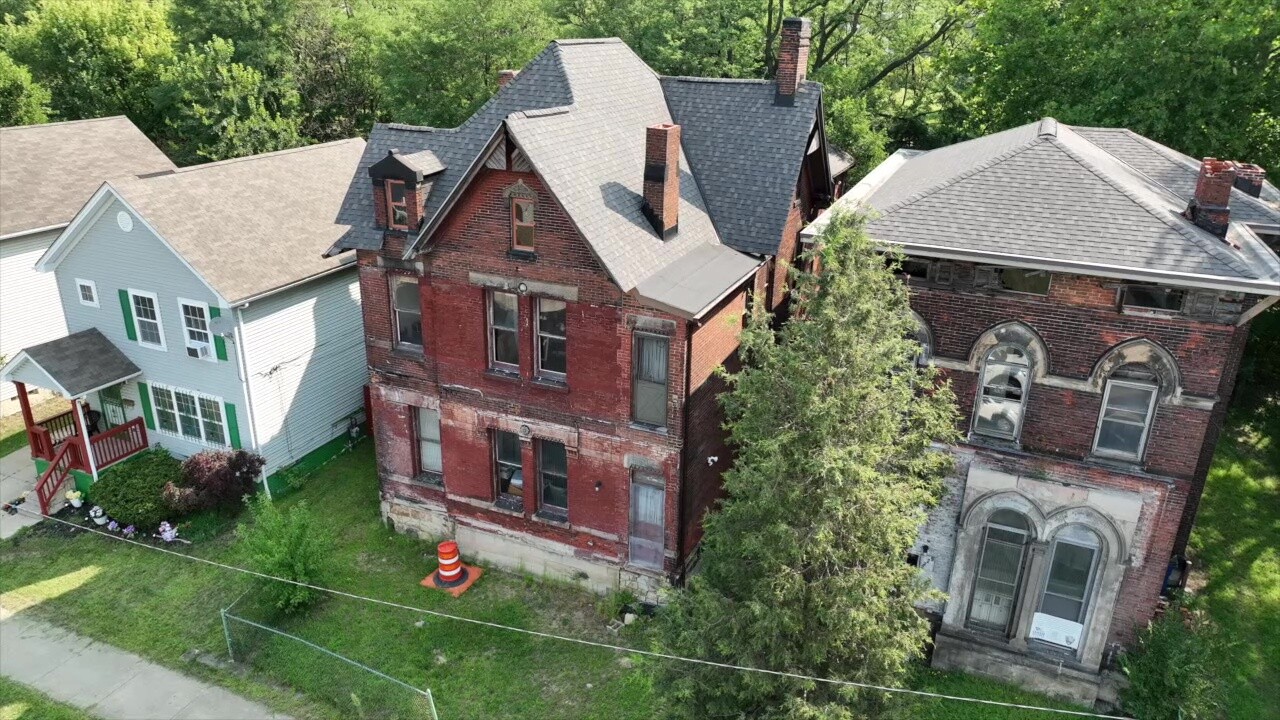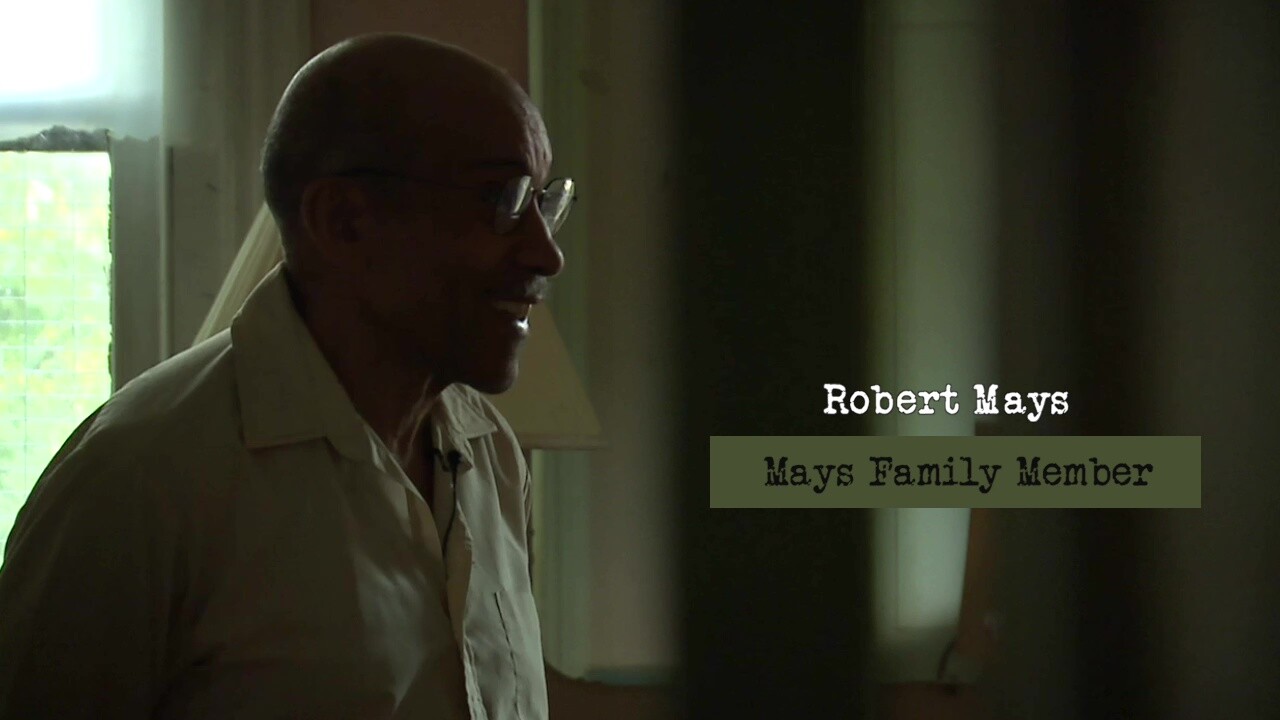CLEVELAND — Frances Mays has been gone for almost a decade. But her fingerprints linger in a pair of mansions on Cleveland’s East Side.
The brick-and-stone homes in the Central neighborhood are rare survivors on East 46th Street. Built in the 1870s, they originally belonged to builders who touched some of the city’s best-known landmarks. But the houses are still standing because of Frances – a self-taught preservationist who lived there for decades with her husband, James.
Now, the Cleveland Restoration Society is picking up where Frances left off.
The nonprofit hopes to take ownership of the mansions by the end of this year, laying the foundation for redevelopment. The project is the result of an unusual collaboration with two relatives who weren’t willing to let history – or a family legacy – slip away.
“Just providence,” Norman Mays, one of James’s nephews, said of encountering the restoration society. “I’ll say it that way. It wasn’t planned. It was providence.”
On a sunny afternoon in May, Norman stood in the dusty parlor of a house filled with memories. Faded notes in Frances’s neat handwriting still clung to some of the walls.
Norman grew up in nearby Glenville, but he visited the houses as a child. He recalls summer visits to the lush backyard, where family members would linger and talk for hours.
“You’ve got this nice breeze that would come through, and you would just sit there,” he said. “And Frances, being a hostess, she was always like ‘Can I get you this? Can I get you that?’ … She loved to entertain.”

'You don't see that in houses today'
Frances and James bought the mansions in the 1970s. Her great-aunt had owned one of them for years. The couple reunited the pair – the Italianate Andrew Dall House, at 2229 E. 46th St., and the Eastlake-style James Dall House, at 2225 E. 46th St.
Many old houses on the street were disappearing. They were wood-framed, not as sturdy. And Central was struggling with disinvestment, abandonment and blight.
Frances kept track of those demolitions. She mapped out nearby historic structures, with details about their architects. And she compiled information about the Dalls, a family of stonecutters and masons who emigrated from Scotland in 1852.
For decades, the Dalls were some of the city’s preeminent builders. They worked on the Soldiers’ and Sailors’ Monument on Public Square, the Cuyahoga County Courthouse and the Society for Savings Building, a reddish sandstone structure next to Key Tower.
They also built opulent estates that once lined Euclid Avenue. But those mansions are long gone. The family homes, on a quiet street, are remnants of their residential empire.
“Italian design. Architecture. Craftsmanship. You see real craftsmanship,” Norman said. “You don’t see that in houses today.”

'2 Victorian Homes in limbo'
Frances worked to get the mansions named city landmarks, giving them protection from demolition and major changes. She and James threw a party to celebrate. They wore Western-style clothing and served barbecue and a cake.
“See the Landmarks before restoration,” the invitation read. “2 Victorian Homes in limbo.”
The couple also had the mansions added to the National Register of Historic Places, making them eligible for tax credits for preservation. Frances began turning the Andrew Dall House into a museum filled with books, artifacts and artwork.
She focused on design, history and Black culture, telling the story of a place where European immigrants gave way to African-Americans during the Great Migration.
Her collection included a copy of “The Death and Life of Great American Cities” by Jane Jacobs. Pamphlets from a local church tucked into the “Atlas of Africa.” A painting with a note penciled on the back: “To Jim and Fran, for the Dall Houses, House Museum, December 1991.”
But Frances never fully realized her vision. She and James had the passion but not the money. He was a military veteran who worked blue-collar jobs. She ran the household. They took on most of the upkeep themselves and rented out parts of the mansions as apartments.
“James did the labor, but she did the idea stuff,” Norman said.
Files maintained by the Cleveland Landmarks Commission chronicle her fruitless attempts to get outside funding. Foundations politely declined her grant requests.
In 1981, the Cuyahoga Metropolitan Housing Authority said the mansions weren’t in good enough condition to qualify for the Section 8 housing voucher program. On a rejection form, two words jump out from the list of reasons for disapproval: “Neighborhood bad.”

'I could see who she was'
As Frances and James aged, the houses deteriorated. The maintenance was far too much for a childless couple on a tight budget. Water seeped in through the failing roofs.
Frances died in 2015, and James slowly declined, dying in the spring of 2022.
By then, the restoration society had stepped in.
Norman and his brother Robert don’t recall how they met Kathleen Crowther, the nonprofit’s president. Norman described it as a chance meeting, a bit of serendipity. But Kathleen says the brothers knocked on the restoration society’s door.
Either way, there was some kismet at work. Because Crowther was captivated.
“Walking inside is what sold me on saying ‘We’ve got to figure this out,’” she said. “Because the house was set up like a, in my view, a Southern historic house museum. It was decked out in antique furniture … The dining room table was set as though a formal dinner could happen in 30 minutes if guests came over.”
And it wasn’t just what Kathleen saw.
“I just felt sort of a connection with Frances. I could see who she was and what she was trying to do,” she said.

'A lot of twists and turns'
The restoration society has been working with Norman and Robert for five years now.
James was still alive for the first few years, but his mind was failing. He moved into a nursing home. Robert, who has a knack for fixing things, became the legal guardian for the homes.
That arrangement allowed the restoration society to make critical repairs to keep the mansions from crumbling. The team worked with the city’s building department, which had condemned the properties, to remove collapsing front porches and eliminate safety risks.
Contractors fixed the roofs, windows and doors. The restoration society raised over $80,000 from foundations and the state's historic preservation office to pay the bill, while companies donated labor and some supplies.
At this point, Crowther said, the homes are “in a kind of frozen, stabilized condition.”
But the legal process hasn’t been easy. The restoration society was on the verge of taking control of the houses in 2022 when James died without leaving a will.
Everything stalled. For more than a year, his estate has been working its way through probate court. There were liens to get rid of, family members to notify and other hurdles.
“There have been a lot of twists and turns,” said Scott Holbrook, a lawyer who sits on the restoration society’s board and leads a task force focused on the houses.
The nonprofit is waiting for a probate court judge to approve a motion to transfer the houses. Once that happens, the mansions will pass to the Cuyahoga Land Bank, which will wipe out delinquent property taxes and fees. Then the restoration society will take over.
“Clearly we’ve had the family on board with us since day one, which has been great,” Holbrook said. “They were the ones who realized this was an important thing to work on.”

'Historic preservation takes time'
Last fall, the restoration society asked real estate developers to submit proposals for restoring the homes.
To sweeten a tricky deal, the city agreed to throw in 16 vacant lots on East 46th and 49th streets. The idea is that a bigger project, with a blend of new construction and preservation, will be easier to finance and more appealing to developers.
Crowther said the restoration society received one viable proposal. But she and her board are still exploring their options. They’re open to talking to other developers.
After investing so much in this project, they’re willing to wait for the right fit.
“Historic preservation takes time,” she said. “That’s probably the most important message. It takes patience to develop the plan, finance the plan and execute it.”
The properties probably won’t ever be single-family homes again. The Andrew Dall House, where Frances and James lived, is split into at least 17 rooms, with three kitchens. The James Dall house was transformed into four apartments with two dozen rooms.
Developers have looked at the mansions for apartments, offices or nonprofit uses. The rest of the street is residential, lined with tidy houses built in the early 2000s during a wave of construction in the city’s poorest neighborhood.

'A real fellow traveler'
Robert Mays has gotten to know that street well over the past few years. He keeps watch over the mansions, where the family already cleaned out the few valuable items.
“I just hope somebody is able to restore them to their original luster,” he said. “They’re beautiful homes. It would be a shame to lose them.”
But he’s ready to let them go, to put Frances’s hopes into Crowther’s hands.
“It’ll be about time,” he said, laughing.
As the family moves on, the Mays name will stay. The restoration society formally renamed the properties as the Dall-Mays Houses, to honor Frances and James.
“We call them grassroots preservationists,” said Margaret Lann, the nonprofit’s director of preservation services. “But I believe that if Frances were alive today, she could work at the Cleveland Restoration Society.”
Holbrook, the attorney, agreed.
“It seems like she’s a real fellow traveler with us,” he said. “And I think it would have been great to know her.”





